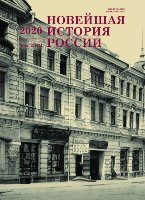Эмоциональное сообщество и повседневная жизнь учителей Магнитогорска (1929–1941 годы)
Emotional Community and Everyday Life of the Teachers of Magnitogorsk (1929–1941)
Author(s): Nadezhda Nikolayevna MakarovaSubject(s): Social history, History of Education, State/Government and Education, Interwar Period (1920 - 1939), Sociology of Education
Published by: Издательство Исторического факультета СПбГУ
Keywords: history; everyday life; emotions; emotional community; emotional repertoire; Magnitogorsk;
Summary/Abstract: Using a broad source base, including previously unpublished materials, this study examines teaching in Magnitogorsk in the period of accelerated industrialization as a unique emotional community with a special type of daily life.. The predominant historical sources are recollections of Magnitogorsk teachers, written at different times relative to the time of studied events. The article uses methodological tools proposed by Iu. Bessmertny, H. R. Iausom, J. Plamper, and W. Reddy. The social portrait of a Magnitogorsk teacher was far from ideal. Teachers were dominated by women under the age of 20, with minimal experience and education, but official discourse and memories about teachers at Magnitostroi drew on a universal reference image of a professional Soviet teacher. The educational community at Magnitostroi was a complex emotional microcosm in which a variety of emotional repertoires coexisted, and teachers themselves belonged to different emotional communities that demonstrated sometimes unusual emotional reactions. Features of social conditions, the overall level of improvement of teachers’ lives and work of teachers, defined the landscapes of everyday life and features of the dominant emotional regime. The last was an official state ideology, adapted to the specific sociocultural and individual peculiarities of city, community, and people.
Journal: Новейшая история России
- Issue Year: 10/2020
- Issue No: 30
- Page Range: 168-182
- Page Count: 15
- Language: Russian

